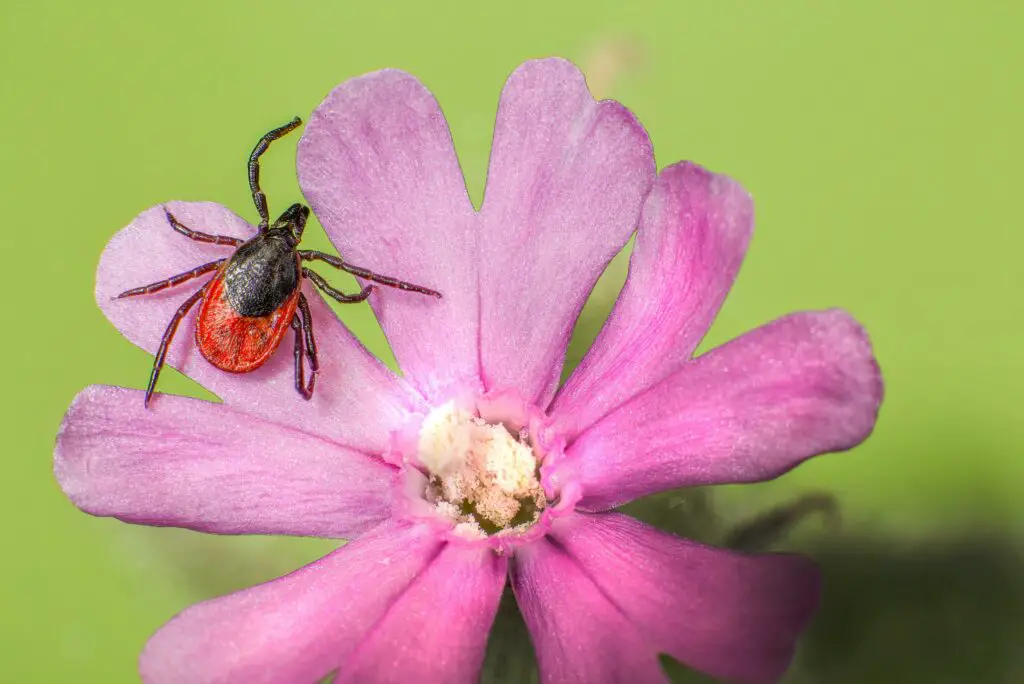Nature is the home to an incredibly versatile array of species, but ticks are definitely one of those that we tend to avoid at all costs.
These tiny arachnids, that are related to spiders, mites, and scorpions, are in fact parasites that survive by attaching themselves to larger animals and feeding on their blood. Humans aren’t spared either. Sadly, these insects carry harmful bacteria that can spread disease to people.
Sadly, tick-borne diseases are at an all-time high, with about 50,000 cases reported each year, and far more going unreported.

There are different types of ticks, and unfortunately, they sometimes find their way to people’s homes. The types most commonly found in homes are the black-legged tick, the dog tick, and the brown dog tick.
- Black-legged Ticks – known as deer ticks, these ticks are typically brown or black in color and have a flattened, oval-shaped body. They are commonly found in wooded areas and can transmit Lyme disease.
- Dog Ticks are larger and can range in color from brown to reddish-brown. They have a tough, shield-shaped body. Dog ticks can transmit diseases such as Rocky Mountain spotted fever.
- Brown Dog Ticks are brown in color and have a slender body.
Although the tick season is between March and October, or sometimes longer, we should be wary of this insects all year round. In fact,if beaten by a tick, a person can develop symptoms even after two or three months.

The bite itself isn’t painful and can cause swelling, itchiness, blistering, and bruising. The bad thing is that ticks also carry and transmit severe diseases, most commonly Lyme disease, as well as Rocky Mountain spotted fever, ehrlichiosis, and babesiosis.
Initially, Lyme disease develops as a circular red ‘bull’s eye’ rash around the site of a tick bite. However, not everyone gets a rash and you should also watch out for a flu-like illness with fever, headache, tiredness and general aches and pains.
The best way to prevent being bitten by a tick is to avoid tall grasses and areas where ticks thrive (such as moorlands and woodlands), especially during the warmer months.
In case you do get bitten, you should remove the tick as soon as possible in order to prevent infections.

These are some of the ways of safe removal.
- Use fine-tipped tweezers: Use clean, fine-tipped tweezers to grasp the tick as close to the skin as possible.
- Pull gently: Apply steady upward pressure, being careful not to squeeze or crush the tick. Aim to remove the tick in one smooth motion without twisting or jerking. Twisting or jerking can cause the tick’s head to break off and stay inside the skin, where it can still transmit disease.
- Clean the area: After removing the tick, clean the affected area with soap and water or an antiseptic solution. Monitor the site of the bite for any signs of infection or a rash, and consult a healthcare professional if necessary.

If by any chance ticks find their way into your home, take immediate action in order to prevent infestation. Most times, ticks are brought into your home in case they stick on your clothes or onto your pets.
- Isolate the area: If you have identified the presence of ticks in a specific area, keep pets and children away from that space.
- Wear protective gear: Put on gloves and a long-sleeved shirt to protect yourself from potential tick bites.
- Clean the area: Clean the area where you found the tick. If it is in bedding, wash the sheets. Inspect the area to ensure there are no more ticks that are present. Dispose of the tick by either flushing it down the toilet or sealing it in a container or ziplock bag before placing it in the trash.
Lizzo’s dramatic weight loss, explained

Lizzo has earned her place as one of the best pop stars of our time. She made history by becoming the first African American woman to win the Grammy for Record of the Year since Whitney Houston. She also holds the record for the longest-running solo song by a female rapper with her hit song “Truth Hurts,” which topped the charts in 2016.
Even with all her achievements, Lizzo’s appearance has frequently been a big topic of discussion. She has received both praise and criticism for promoting body positivity. Recently, her weight loss has sparked more controversy. Here’s what you should know about Lizzo’s weight loss and how she has responded to her critics.
Is Lizzo taking Ozempic?
Lizzo has been sharing her weight loss journey on Instagram. However, some people have accused her of using the weight loss medication Ozempic to help her lose weight quickly.
On September 22, Lizzo used Instagram to respond to rumors about her using Ozempic. She shared a screenshot of a comment that suggested she was relying on outside help to lose weight, asking, “Did she use Ozempic or did she snort coke?” In reply, Lizzo wrote, “Whyyyy do u follow me?”
She denied taking Ozempic and told her fans that her weight loss comes from a dedicated workout routine. In a sarcastic tone, she posted a video saying, “When you finally get Ozempic allegations after 5 months of weight training and calorie deficit.”
Did Lizzo get weight loss surgery?

Weight loss surgery has also been a topic of conversation regarding Lizzo’s transformation. Many fans are surprised by the big changes in her appearance over the past five months and wonder if she might have had surgery to achieve these results.
Lizzo has denied using surgery or other drastic measures to lose weight, saying she loves her body no matter what size she is. She shared a video on Instagram showing her weight loss journey, with the caption: “Fine both ways.”
Even though some have accused her of body shaming her backup dancers and others privately, Lizzo has kept a positive attitude. She may have lost weight, but she still supports body positivity.



Leave a Reply